Geology of Macau
Last update: Mar 2021
Macao, a Special Administrative Region (MSAR) of the People’s Republic of China since 1999 lies on the western side of the Pearl River Delta and it is bordered by Guangdong to the north and the South China Sea to the east and south (geographic coordinates: 22°10′N 113°33′E). The territory covers an area of around 30km2 and consists of the Macao Peninsula itself, linked through an isthmus to the Guangdong province, and the islands of Taipa and Coloane, which are now connected by landfill forming the CoTai Strip.
Geographic Evolution of Macao
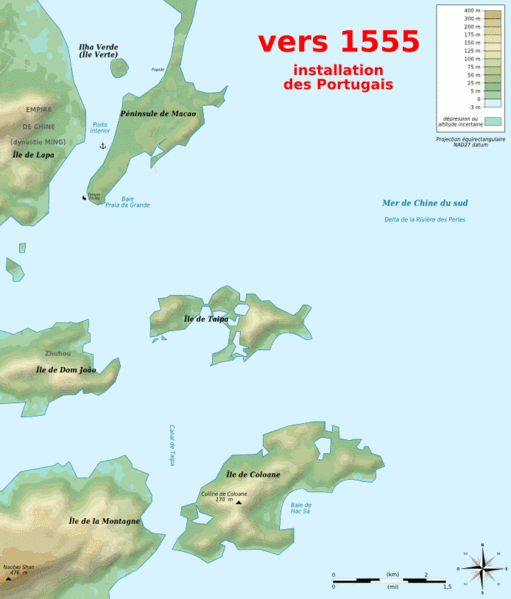
Macao Peninsula was originally an island, connected sporadically with mainland China at the north by a sandbar that gradually turned into a narrow isthmus. The successive land reclamation transformed the geography of Macao along the last centuries (see animated Figure 1). Currently, Taipa and Coloane islands are linked through an area designated by CoTai and together they form just one island. This island (Coloane – CoTai – Taipa) is connected, through three bridges, to Macao peninsula, at north, and via a tunnel to one small area in the Hengqin island (also called as Ilha de Dom João and Ilha da Montanha) at west, which is now under control of MSAR as enforced by a Macanese-Chinese agreement. In November 2017, the eastern part of Macao was connected to Hong Kong and Mainland China (Zhuhai) through the world’s longest sea bridge (HKZMB; 港珠澳大桥).
List of original islands of Macao:
- Macau Island
- Taipa
- Coloane
- Green Island, Ilhéu de Macau-Siac (in Macau)
- Ilha Kai Kiong (in Taipa, near the International Airport)
- Ilhéu das Lázaras (in Coloane)
Geology of Macau
Tectonic evolution
Before the Mesozoic Era (251 million years ago; for the International Chronostratigraphic Chart visualization click here the territory of Macao was totally submerged underseawater and the terrains of South China were drifting from the southern hemisphere to the northern hemisphere. The reconstruction of the distribution of the continents since the late Proterozoic (~650 Ma) until the present configuration and future distributions in the following 250 Ma can be also visualized here.
Only on the Mesozoic Era (the Age of the Dinosaurs, which spans from about 252 Ma ago to 66 Ma ago) the southeastern China region was affected by granitic plutonism generated during the Indosinian (Triassic Period) and Yanshanian orogenies (Jurassic-Cretaceous Periods), overprinting all previous events in the South China Fold Belt (SCFB; Quelhas et al., 2021a).
From a geological perspective, South China is a craton surrounded by the North China Block in the north, the Tibetan Plateau in the west, the Indochina terrain in the southwest and the Philippine Sea Plate in the east (Figure 2).
South China is composed of two major tectonic crustal terranes, juxtaposed along a tectonically complex zone (Jiangshan–Shaoxing Fault Zone; Figure 2).. These two terranes are (1) the Yangtze block and (2) the Cathaysia block, where Macao is located. The latter is composed by the amalgamation of NE- to NNE-trending narrow crustal slices characterized by TDM (depleted-mantle model ages) ranging from Paleoproterozoic to Mesoproterozoic (e.g. Quelhas et al., 2021a;Liu et al., 2009; Li et al., 2007; Fletcher et al., 2004; Sewell et al., 2000)

Seismic activity
Macao is relatively distant from major plate boundaries, such as those between the Euroasian and Philippines and the Euroasian and Australian plates (which are, in turn, divided into smaller plates; Figure 3). This means that Macao is therefore located intraplate, i.e. far from a direct influence of the boundary movement between those plates. This fact explains why seismic activity is not so strong and frequent as it is, for example, in Taiwan or Japan.
Most of the seismic activity in Macao is related with its position in the Southeast Costal Seismic Belt of China (SCSB; Figure 4), whose dynamism results from the relative motion between the Sunda and Eurasia plates and which is absorbed by the coastal faults along the seismic zones.

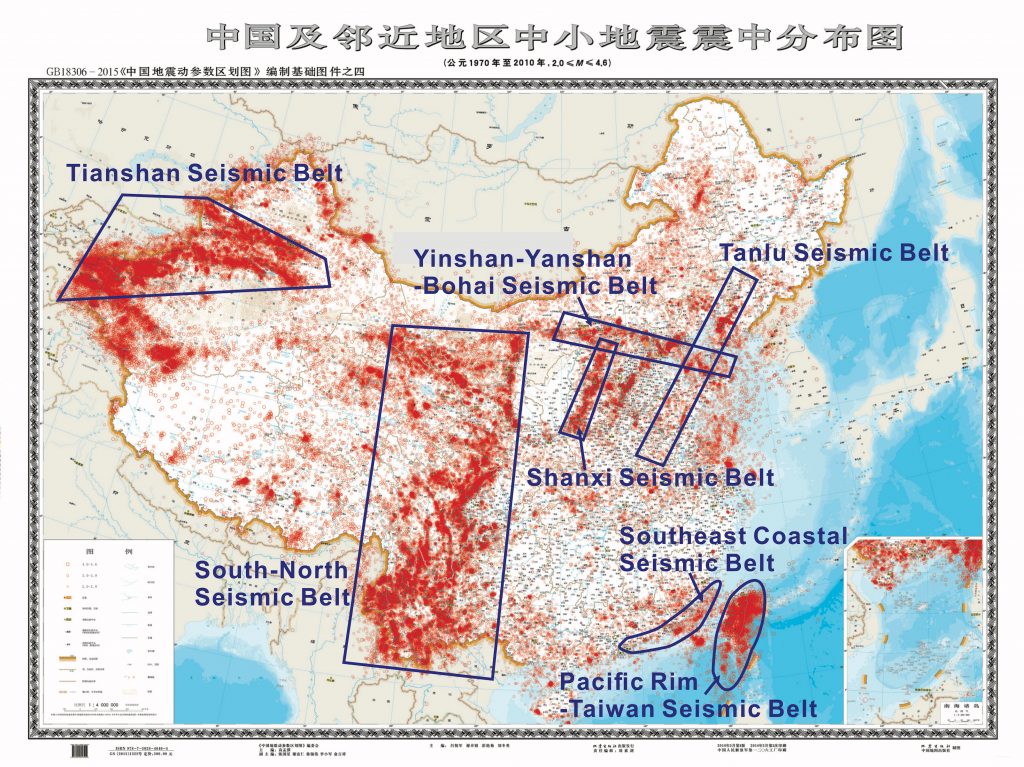
Macao lies within the NE-trending Lianhuashan Fault Zone, bordered by the major faults of Shenzhen, to the north, and Haifeng, to the south (Figure 5).
Along the SCSB coastal área, the occurrence of earthquakes of small magnitude is relatively frequentement. Many are not felt by the population but are, nevertheless, detected by seismographs. On average, more than 10 earthquakes of M>2 are recorded per month in the Guangdong province (see reports on http://www.gddzj.gov.cn/gddzj/dzpd/yzqgk/index.html). However, this region has also experienced higher magnitude earthquakes, although with a longer recurrence period. Below, some examples of the historic earthquakes (M>5; moderate-strong intensities), that occurred in or near this area, and that were felt in Macao are listed (location; magnitude in the Richter scale; date):
- Honghai Bay: M 6.0 on May 15, 1991
- Yangjiang: M 6.4 on July 26, 1969
- Heyuan: M 6.1on March 19, 1962
- Nanao: M 7.3 on February 13, 1918
- Mo Dao Men (adjacent to Macao): M5.5 on August 12 1905.
- Dangan Islands: M 5.8 on June 23, 1874.
Macao is therefore a zone of low to moderate seismic risk, where more frequent earthquakes of low magnitude can be expected. However, earthquakes of moderate to strong magnitude (> 5), and consequently more disastrous, may also occur. See seismic risk map for this region (Figure 6).
Although the seismicity of the territory is generally intraplate and related to the Lianhuashan fault zone, it is possible to feel in Macao tremors that are originate from the neighbouring plate boundaries (interplate seismicity). It is the case of those generated, for instance, along the Taiwan strait (Eurasia-Philippines convergent boundary – subduction zone). Rare were the earthquakes, with the epicentre on that strait, that have been felt by the population of Macao. Examples were the earthquakes recorded on November 16, 2018 of M5.7 and on September 16, 1994 of M 7.3. Although they do not strongly affect the territory of Macao, given their distant origin, these type of earthquakes present an additional hazard once they are tsunamigenic (i.e., they can potentially generate a tsunami wave).
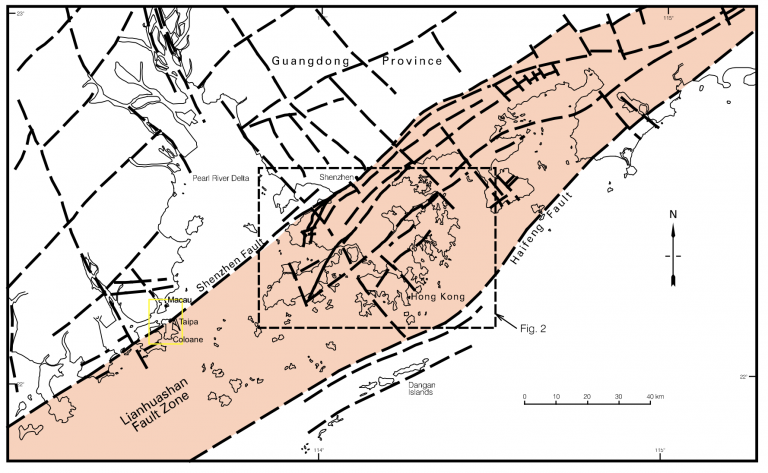
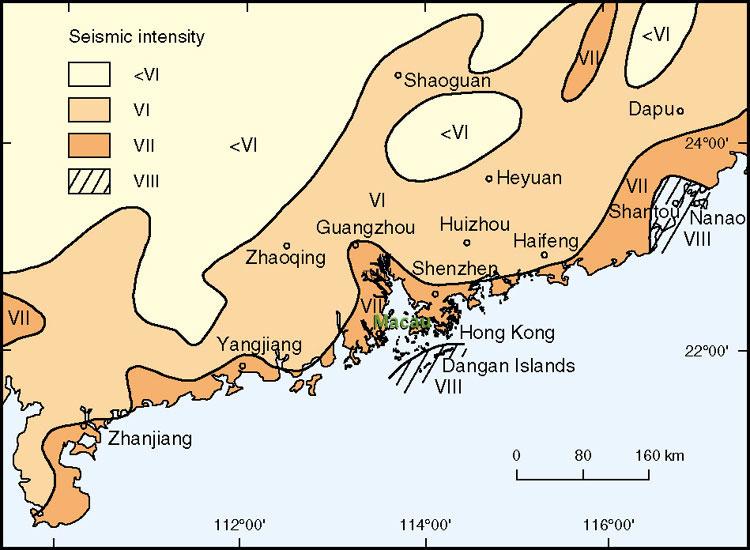
Petrology, Geochemistry and Geochronology of Magmatic Rocks of Macao
The territory of Macao (~30km2) is composed of granitic intrusions belonging to the Southeast China Magmatic Belt (SCMB), located in the SE area of the Cathaysia Block (Figure 7). This belt is known by the occurrence of large volumes of Mesozoic magmatic rocks (over 90% are granitic rocks and equivalent volcanic rocks with minor basalts), occupying a total outcrop area of nearly 200.000 km2 (e.g. Zhou et al., 2006).
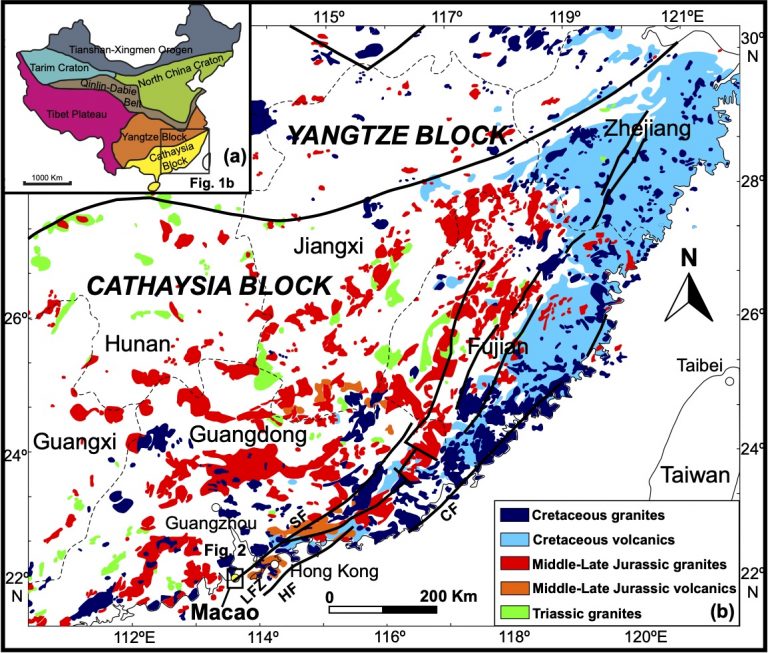
The ages estimated for the different granitic rocks of Macao (U–Pb zircon geochronology) allowed to conclude that the magmatism of the territory occurred along two distinct phases in geological time. One group of granitic rocks was intruded between 164.5 ± 0.6 and 162.9 ± 0.7 Ma (MGI – Macao Group I granites) and another between 156.6 ± 0.2 and 155.5 ± 0.8 Ma (MGII – Macao Group II granites). Younger dacite dykes were dated at 150.6 ± 0.6 Ma and <120 Ma (Figure 8; Quelhas et al., 2020).

The existence of two proximal but distinct granitic pulses, spanning for a time of about 9 Ma and separated by ca. 6 Ma, in the Macao granitic suite suggests that it was incrementally assembled. This hypothesis is also extendable to the neighbouring Hong Kong region, where the magmatic activity occurred in four major pulses spanning for about 24 Ma (e.g., Sewell et al., 2012). However, the MGII granites indicate the occurrence, on the Pearl River Delta region, of a magmatic pulse between those defined in Hong Kong at the origin of Lamma Suite (165–160 Ma) and the Kwai Chung Suite (148–146 Ma; Figure 9;Quelhas et al., 2020).
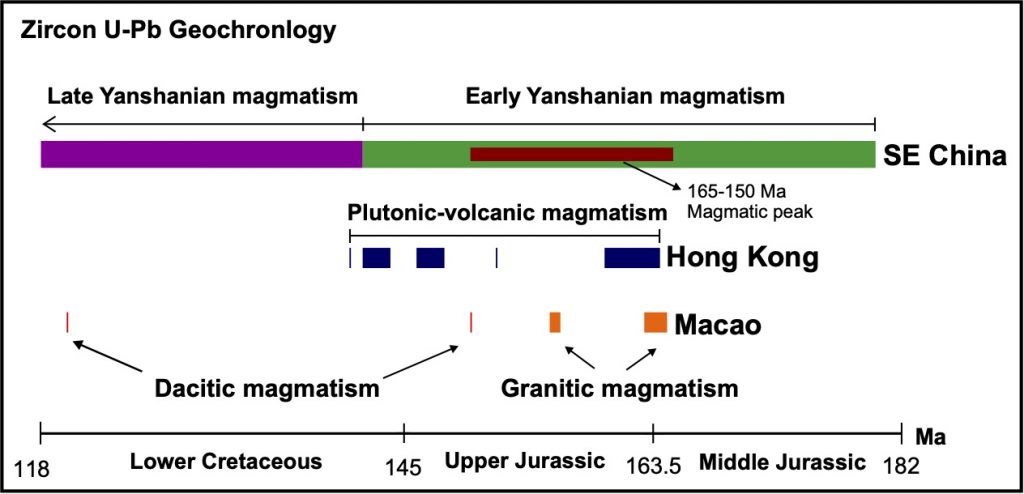
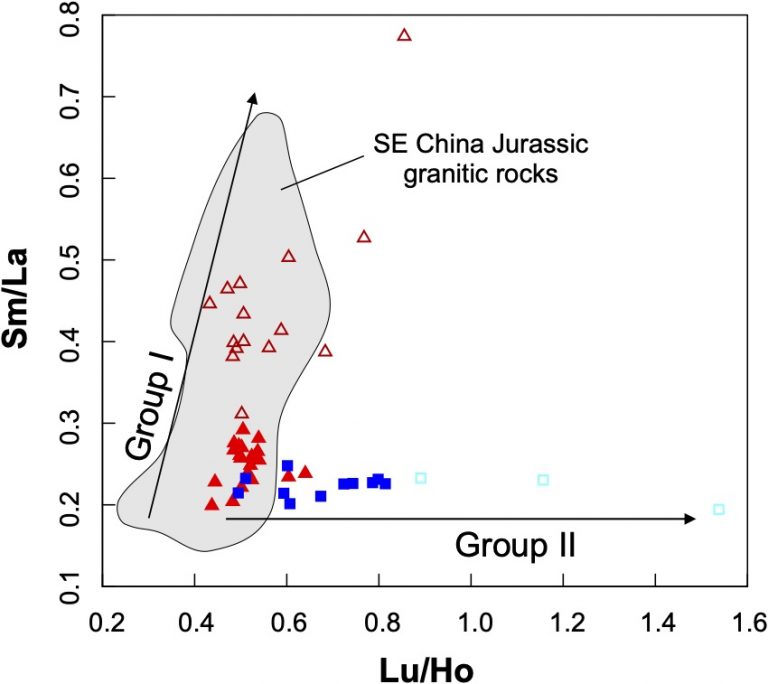
Besides, Rare Element Earth (REE) ratios (Figure 10) suggest that this pulse may only occur in Macao area, while MGI granites show evolving trends of REE ratios similar to those of Jurassic granites outcropping in vast areas of the Cathaysia Block (SE China).
Inheritance patterns in the zircon U–Pb data indicate the presence of a population of antecrysts (165–180 Ma) crystallized from earlier magmatic pulses and a population of inherited zircons, from Precambrian to Phanerozoic sources, incorporated into the magmas during melting and/or ascent/emplacement at crustal levels. The oldest inherited ages suggest contribution of Proterozoic and possibly of late Archaean crustal sources (2.4 Ga and possibly 2.9 Ga; Quelhas et al., 2020) for the Macao magmatism (Figure 11).
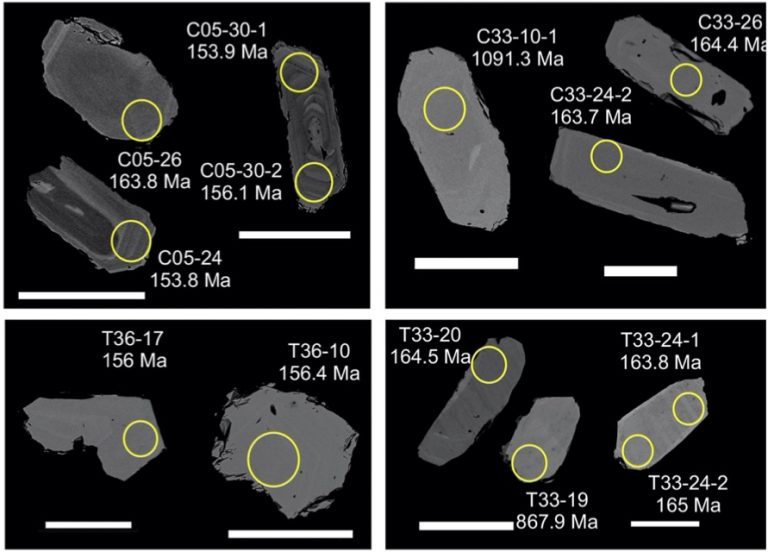
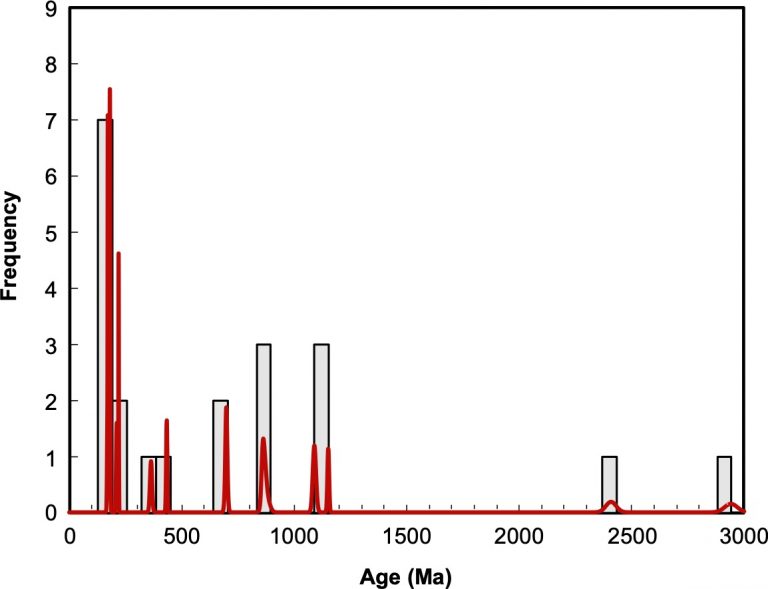
Figure 11 (a) images and (b) histogram plot of inherited ages of zircons from the Macao magmatic rocks (Quelhas et al., 2020).
The granitic rocks of Macao are mainly high-K calc-alkaline metaluminous to weakly peraluminous I-type granites with variable degrees of fractionation (Quelhas et al. 2021a) Moreover, isotope and major element compositions together with model ages strongly suggest that Macao granitic magmas were generated by partial melting of infracrustal medium- to high K basaltic Proterozoic protoliths heated, as mention before, that was mixed to some degree with mantle-derived magmas (more details in Quelhas et al. 2020).
Tectono-magmatic evolution of Macao and SE China
The temporal and spatial association of Macao and SE China Jurassic I-type granites with basaltic/gabbroic rocks, syenites and A-type granites, displaying typical intraplate chemical features, indicates an extensional regime rather than an active margin for the origin of these rocks. It also points to an important role of mantle-derived magmas in the production of SE China Jurassic granites. Adiabatic decompression melting of the asthenospheric mantle produced mafic magmas, which underplated at the base of the crust (Moho), subsequently triggering partial melting of the lower crust to generate the granitic magmas. The Jurassic Macao granites are interpreted as being produced in an intraplate extensional setting related to the break-off and foundering of a previously Paleo-Pacific flat-slab beneath the Eurasian plate (Figure 12).
The boundary between east and west Cathaysia blocks is roughly along the Zhenghe- Dapu Fault (ZDF), which intersects the SE China coast near Hong Kong and is thought to have played a major role for the Mesozoic magmatic activity in this region. The stronger isotopic affinities of Macao granites with the other granitic rocks and lower crustal xenoliths from the western Cathaysia Block suggest that the ZDF is likely to pass south of Macao.
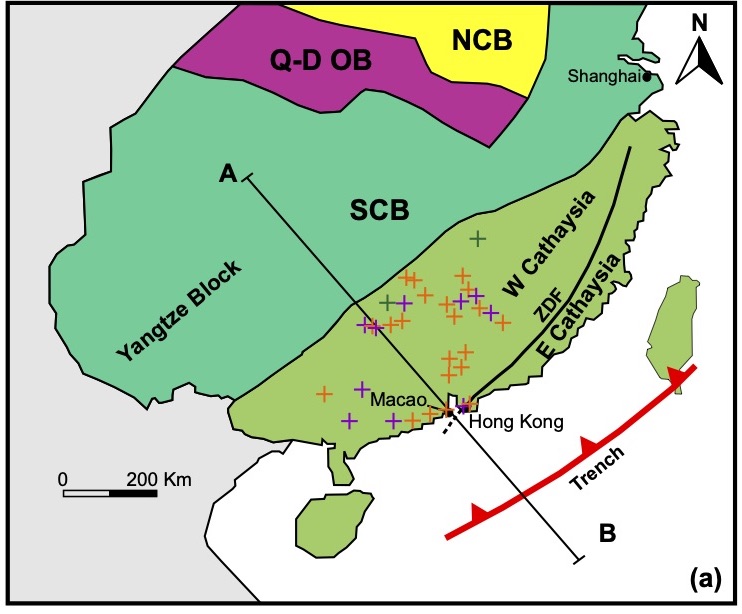
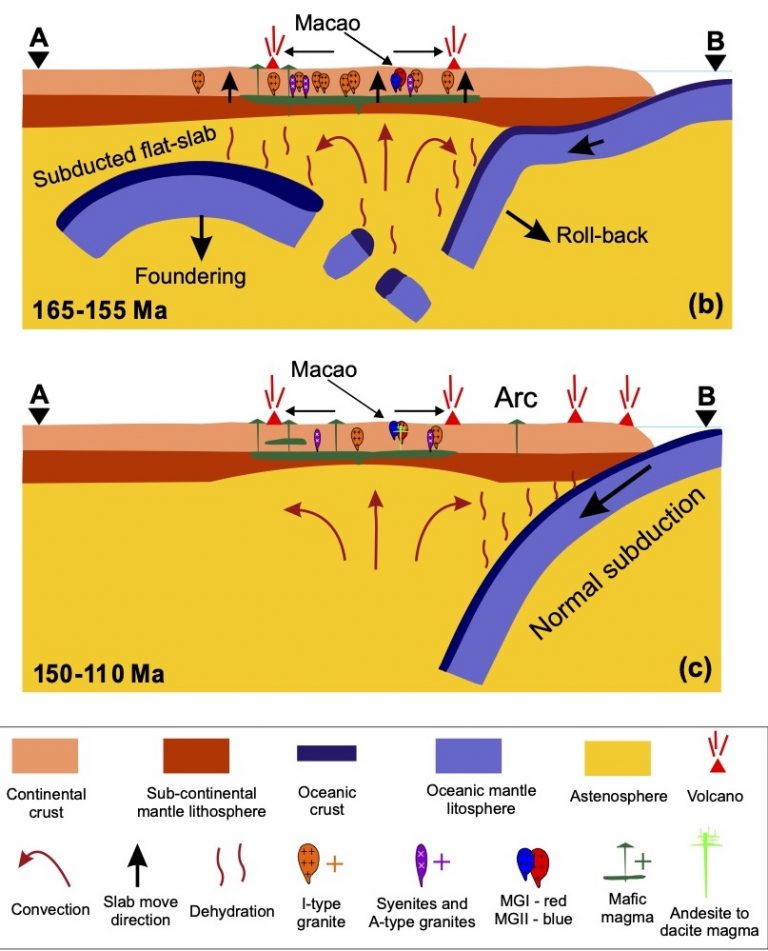
Figure 12 – Diagram showing the proposed two-stage tectono-magmatic evolution of Macao and SE China during the Jurassic to Cretaceous period: (a) Distribution of granitic rocks and related intrusions following collision and roll-back of subduction zone between 165 and 155 Ma. (b) Schematic cross section along the line A–B showing the main magmatic event between 165 and 155 Ma in response to foundering of a flat slab. (c) Schematic cross section along the line A–B showing the return to a normal subduction system between 150 and 110 Ma. SCB—South China block; NCB—North China block; Q-D OB—Qinglin-Dabie orogenic belt; ZDF— Zhenghe-Dapu fault. (Quelhas el al., 2020)
In addition to the Early Yanshanian (Jurassic) granitic magmatism in Macao, the younger ages obtained for the dacite dykes indicate that the territory was also affected, to a lesser degree, by Late Yanshanian (Cretaceous) magmatism. The transition from granitic to dacitic magmatism most likely corresponds to a change in the regional tectonic regime, which induced a significant change in the magma genesis processes. In contrast with the intraplate features of Macao and SE China Jurassic granites and coeval mafic rocks, the dacite dykes of Macao seems to be generated by arc-like subduction related magmas. These dacites are most likely evolved products of arc-like magmatism and may testify the reestablishment of a normal subduction system in this area of SE China (Quelhas el al., 2020).
Geological maps of Macao
View and download the published version here:
(Journal of Maps)
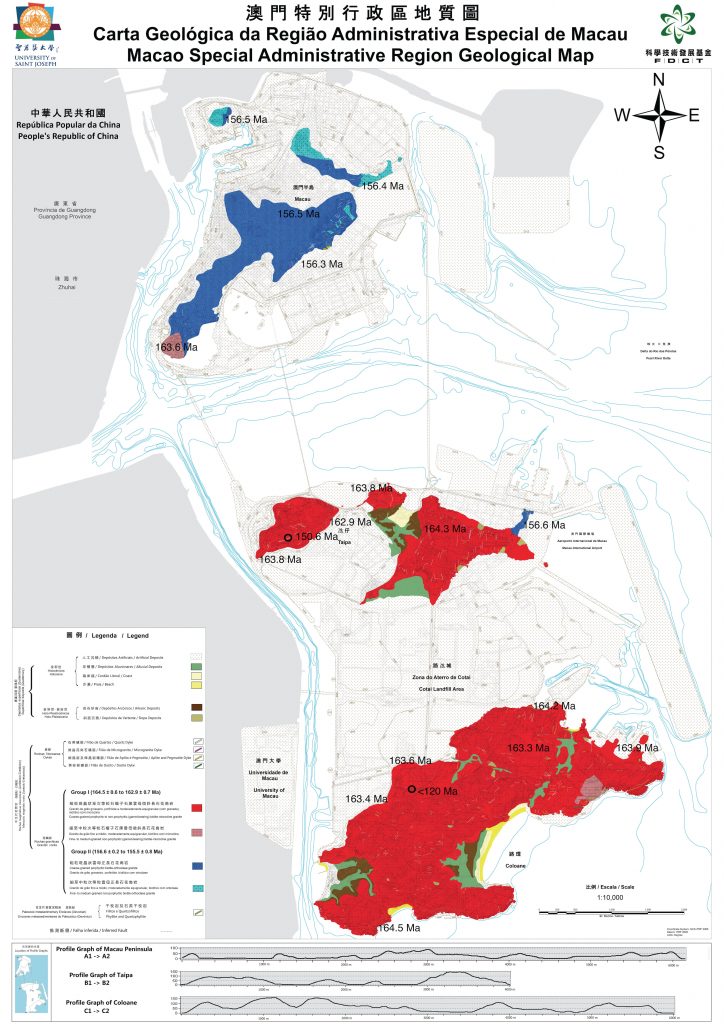
The new Geological map of Macao (Figure 13) is now available in hard copy and in GIS format (geographic information systems) and was published in the Journal of Maps (Quelhas et al. 2001b)
The territory of Macao was mapped in a more comprehensive and detailed way, through the acquisition of data obtained over several field trips and based on petrographic and geochemical studies carried out during the MagIC project (FDCT 043/2014 / A1). In this new version, information is provided in English, Chinese and Portuguese. The map is available through this website; however, its source must be acknowledged (@Geology of Macao, ISE website, USJ, Macao) and reproduction for commercial purposes is prohibited. Currently, only a low-resolution map can be obtained; a high-resolution version will be available after its final publication.
Note: the map and a representative sample collection is available for consultation in the USJ Library
Previous geological maps of Macao
Before the new map, the complete official document reporting the geology of Macao was published by Ribeiro et al. (1992). The document consists of the Macao Geological Map (“Carta Geológica de Macau”; Figure 14) at a scale of 1:5000 and an accompanying memoir (Ribeiro et al., 1992), edited by the Serviços Geológicos de Portugal. The first published works describing the Geology of the Macao territory and its main lithologies date from the mid of the XX century (Carrington da Costa, 1944; Carrington da Costa and Lemos, 1964; Lemos, 1963; Figure 15) which also produced the first draft of a geological map of Macao. Later, Marques (1988) also contributed to the knowledge of Macao’s geology with a study strongly focused on geotechnical analyses. Here, relevant stratigraphic sections were presented through the study of cores collected in the territory.

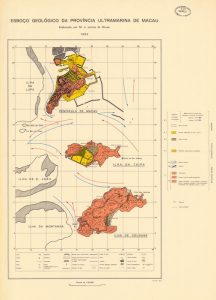
Notes
- Website contributors: Ágata A. Dias (principal investigator), João Mata (scientific member), Pedro Quelhas (researcher; former PhD student), Varon Lou, Ricardo Borges, Pedro Costa (research assistants) and Luísa Ribeiro (consultant); additional contributions: Wenhong Qiu and Yafei Wu (researchers);
- This work was carried out as part of “MagIC” – Petrology and Geochemistry of Igneous Rocks from Macao: Implications for the Crustal Evolution of Southern China / 项目: 澳门火成岩之岩石学与地球化学—对华南地壳演化的影响), Reference no. 043/2014/A1, financed by Science and Technology Development Fund from Macau (FDCT);
- A representative collection of rock samples of Macao and the new geological map can be found in the USJ Library (USJ, Ilha Verde Campus, Macao; address: https://www.usj.edu.mo/en/libraries/ );
- For further information about the geology of Macao, please contact the Institute of Science and Environment (http://www.ise.usj.edu.mo/contacts/; Prof. Ágata A. Dias).
Publications about the geology of Macao
- Quelhas, P, Mata J and Dias, A Á (2021c) Magmatic evolution of garnet-bearing highly fractionated granitic rocks from Macao, Southeast China: Implications for granite-related mineralization processes. Journal of Earth Sciences. JES-07-2020-0330. https://doi.org/10.1007/s12583-020-1389-4
- Quelhas, P, Borgens. R, Dias, A. Á, Ribeiro, L, Costa, P Mata, J. (2021b) Geological Map of the Macao Special Administrative Region (China). Journal of Maps In press.
https://doi.org/10.1080/17445647.2021.1906340 - Quelhas P, Mata J, Dias Á A (2021a) Evidences for mixed contribution of mantle, lower and upper crust to the genesis of Jurassic I~type granites from Macao, SE China. GSA Bulletin. 133 (1-2): 37–56.. https://doi.org/10.1130/B35552.1
- Quelhas, P., Dias, Á A., Mata, J., Don, D., Ribeiro, L. (2020) High-precision geochronology of Mesozoic magmatism in Macao, Southeast China: evidence for multistage granite emplacement. Geoscience Frontiers. 11, 1. 243-263 https://doi.org/10.1016/j.gsf.2019.04.011
- Quelhas P, Dias ÁA, Mata J & Wayne Davis D (2019) Goldschmidt2019, 258. 21st August. Barcelona. https://goldschmidt.info/2019/abstracts/abstractView?id=2019004459
- Quelhas P (2019) PETROLOGY AND GEOCHEMISTRY OF THE IGNEOUS ROCKS FROM MACAO (SOUTH CHINA): TECTONO-MAGMATIC IMPLICATIONS. PhD Thesis. USJ-FCUL. 400pp. PDF
- Quelhas P, Mata J, Lou U T, Ribeiro M L, Borges R, Dias Á A (2018) New geochemical constraints on I-type granites of Macao: evidences for fractional crystallization and petrogenetic affinities with Jurassic-Cretaceous granites in SE China. XIV Congresso de Geoquímica dos Países de Língua Portuguesa e XIX Semana de Geoquímica (XIV CGPLP/XIX SG, 25-29 March 2018, Trás-os-Montes e Alto Douro, Portugal
- Quelhas P, Mata J, Lou U T, Borges R, Ribeiro M L and Dias Á A (2017) New geochemical constraints on I-type granites of Macao: evidences for fractional crystallization and petrogenetic affinities with Jurassic-Cretaceous granites in SE China. Goldschmidt2017. 06d-2126. Paris.
- Quelhas P, Mata J, Lou U T, Ribeiro M R and Dias Á A (2016) Mesozoic Granitic Magmatism in Macao, Southeast China. AGU Fall meeting 12-16 December 2016, San Francisco, USA. https://agu.confex.com/agu/fm16/meetingapp.cgi/Paper/159532
- Dias Á, Quelhas P, Lou U, Mata J & Ribeiro M L (2016) Petrology and Geochemistry of Granitic Rocks from Macao. Goldschmidt2016. 61, 05c – 665. Yokohama, Japan. July. http://goldschmidt.info/2016/uploads/abstracts/finalPDFs/665.pdf
- Quelhas, P (2015) Preliminary data from Macao petrology: Summary of the field work and first petrographic analysis. First Meeting on the Geology of Macao, ISE/USJ, Macao, 9 -13 of Nov.
- Dias, Á A (2015) Presentation of the Magic Project. First Meeting on the Geology of Macao, ISE/USJ, Macao, 9 -13 of Nov.
- M. Luisa Ribeiro, J. Farinha Ramos, E. Pereira, R. Dias (2010) Macau, evolução do conhecimento geológico / The evolution of the Macao Geological Knowledge. “Ciências Geológicas – Ensino e Investigação e sua História”, 2010; Volume III, Capítulo III – Geologia das Ex-Colónias da Ásia e Oceânia, Macau |259. http://repositorio.lneg.pt/bitstream/10400.9/1301/1/34425.pdf
- Farinha Ramos J M & Neiva, Cotelo Neiva J M (2010) Algumas características geológicas e geotécnicas do território de Macau : recursos geológicos. “Ciências Geológicas: Ensino, Investigação e sua História” Eds. J. M. Cotelo Neiva (et al.). Lisboa : APG, SGP, Vol. III, Cap. III, p. 267-277.
- So C L & Ribeiro M L (1997) Encyclopedia of European and Asian Regional. Encyclopedia of Earth Science, Portugal: Macao, pp 620-621.
- Ribeiro, M. L., et al. (1992) Carta Geológica de Macau na escala 1:5000 (inclui Notícia Explicativa, link). Ministério da Indústria e Energia, Direcção-Geral de Geologia e Minas, Serviços Geológicos de Portugal. (now LNEG), Portugal
- Marques, F M S F (1988) Contribuição para o conhecimento geológico e geotécnico do Território de Macau. MSc thesis, Geology Dep., FCUL, 188pp.
- Carríngton da Costa J &, Lemos de Sousa M J (1964) Fisiografia e geologia da província de Macau “Governo da Província de Macau”, Centro de Informação e Turismo, 53pp.
- Lemos de Sousa M J (1963) Esboço Geológico da Província Ultramarina de Macau “Imprensa Nacional de Macau” Carta Geológica; IICT-Centro de Documentação e Informação de Macau.
Geology of Macau in the News (Portuguese)
Other useful links:
MagIC project (FDCT) | General Earth Science | Geology of Hong Kong | IDL – Instituto Don Luiz | LNEG – Laboratório Nacional de Energia e Geologia (Laboratório de Geologia e Minas), Portugal
